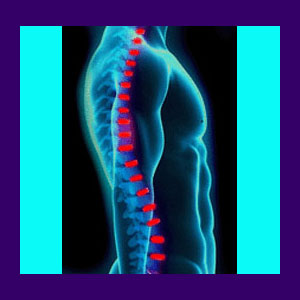
Back pain diagnosis is the most vital component of the treatment process. Without an honest, objective and accurate diagnosis, patients have little hope of recovering from back pain. Back ache is a condition which is known to be a chronic, treatment resistant problem for millions of patients. While this is true, the reasons for its tenacity and longevity are rarely closely analyzed. Two of the main perpetuators of any chronic back pain condition are poor diagnostic procedure and antiquated knowledge about the causes of symptoms. Research and clinical statistics demonstrate without a doubt that misdiagnosis is rampant in the back pain industry. No wonder so few patients actually ever get better.
This resource section details the diagnostic process for back, neck and sciatica pain. We will explore the tools and procedures utilized to ascertain the causes of symptoms, as well as detail many of the inherent problems with the typical diagnostic process.
Structural Back Pain Diagnosis
Doctors excel in diagnosing physical pain. There are countless anatomical spinal abnormalities which are blamed for a host of painful symptoms. Diagnosis of physical back ache is tricky and individual practitioners might all have different theories as to the actual cause of a patient’s suffering.
Diagnosis is not an objective science in most cases. Instead, doctors may use subjective opinion to form conclusions, often based on myths, invalidated concepts and purely economical motivations. When it comes to the structures of the spine, as well as the surrounding muscular and supportive tissues, there are many possible variables to consider when diagnosing back pain.
Diagnosis of Back Pain Topics
These discussions educate patients on some important considerations to keep in mind when seeking diagnosis for any type of back or neck pain.
Back pain diagnostic eclecticism is always a warning sign that something is amiss in the treatment process.
Back pain doctor referrals can help patients to receive more accurate diagnoses.
Spine MRI is a fantastic technology that allows unrivaled visualization of the skeletal and soft tissue components of the backbone. However, do not think that a back pain MRI is a foolproof diagnostic method.
Spinal X-ray is a limited form of diagnostic imaging, but is still very useful for identifying certain pathological conditions, such as fractures.
Discogram testing is commonly utilized when one or more intervertebral structures are suspected of causing a back or neck pain complaint.
EMG for back pain is a diagnostic procedure that can help identify the causation of neuromuscular disorders.
The dreaded straight leg raising test can bring on terrible agony, but provides no actual scientific data that is useful for diagnostic purposes.
Psychosomatic Back Pain Diagnosis
Doctors rarely acknowledge that the mind and the body interact constantly to create all conditions of health and disease. Doctors view the body as an anatomical machine and are known to deny the powers of the mind to cause physical symptoms in the body. This is sheer nonsense, since medicine itself has proven the existence of the mindbody process. The mind obviously controls anatomical responses when it comes to the fight or flight response, sexual arousal, nervous reactions, fear, anxiety, rage and many others. Doctors will acknowledge these mindbody connections, but will vehemently deny other similar interactions.
One of the most common denials is the epidemic example of psychological back pain. This should be absolute no surprise to any of you, since if doctors can not treat it and make money, then surely it does not exist.
Scapegoats During Back Pain Diagnosis
Spinal abnormalities exist so frequently in the human back that they should really be called normalities. Most people demonstrate one or more common conditions in their spines which are often blamed for back pain. However, these people have no pain, even though their spines are identical in injury and degeneration to symptomatic patients. Most of these so called abnormal conditions in the spine are completely normal and expected parts of aging. These conditions are rarely the causes of pain, but have been vilified into becoming scapegoats on which millions of cases of back pain are blamed every year.
Most major medical associations are on board with the idea of not diagnosing pain based on imaged abnormalities. Some organizations have gone so far as to warn physicians that supposing a cause of pain based on coincidental irregularities goes against all current research and clinical experiences in the dorsopathy sector. Good for medical science. See, you can teach an old dog new tricks after all.
Back Pain Diagnostic Processing
The actual diagnostic process often imparts a nocebo effect upon the patient. This is a perfect subtle example of an iatrogenic back pain condition. In these common cases, the doctor actually causes, perpetuates or worsens existing symptoms by creating a scenario filled with fear and doubt through their diagnostic procedure. Patients with no prior pain often begin to experience symptoms once diagnosed with a scary sounding spinal condition, while patients with minor pain often worsen immediately.
Doctors should do everything in their power to reassure the patient and present all back pain diagnoses in an objective and fact filled manner. Patients should get the full story on every spinal condition, not just half the story. However, this rarely occurs, since an educated patient is unlikely to participate in long-term and highly profitable treatment programs. Doctors who can not perform this task should be removed from their medical practice and re-educated in the oath they swore prior to licensure.




